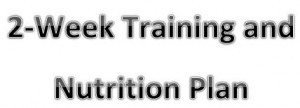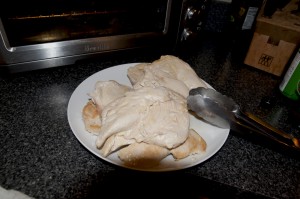Here is yet another essay I wrote for my English class. I thought this essay was perfect because I’m working on getting fitter. For a while I was doing a lot of cardio with little results. I switched my training to training with heavy weights and saw results immediately. This led me to write this essay.
~~~~~~~~~~~~~~~~~~~~~~~~~~~~~~~~~~~~~~~~~~~~~~~~~~~~~~~~~~~~~~~~~~~~~~~~~~~~~~~~~~~~~~~~~~~~~~
High Endurance Cardio Training vs. Training with Heavy Weights
Losing weight and getting in shape is not easy. Attaining the body a person wants takes hard work and dedication. It seems that every day more and more people, myself included, set goals for themselves to lose weight. They set these goals with intentions of losing weight and getting leaner to look better, improve their health and increase their longevity. The problem that many of these people face as they start their journey to better health and a better physique, is that they do not know where to begin. Television, magazines, and the internet abound with so called experts who all proclaim to have the answers that everyone is seeking for the best way to achieve, “The dream body you have always wanted” or “six-pack abs in 14 days!” These advertisements prey on an individual’s desire to look like the impossibly beautiful and toned models in advertisements, and to achieve results quickly. Quick-result gimmicks aside, there are two main schools of thought about how to get healthy and attain an attractive physique: workouts that focus on high endurance cardio training, and training with heavy weights. While both types of workouts provide countless benefits to the people who partake in them, I believe training with heavy weights is the best method to achieve lean, well-muscled, and healthy bodies.
High endurance cardio training, such as running, cycling, and rowing increases endurance and stamina. Cardio training has also been linked to other benefits such as immune system health and short-term sense of wellbeing. Additionally, cardiovascular training reduces the incidence of diabetes and cardiovascular disease, including high blood pressure and stroke. These benefits of cardio training should never be discounted, and cardio exercise should always be seen as a worthwhile investment of time and effort; however, cardio training has its limitations and downsides. For example, jogging, whether on a treadmill or pavement, places severe and repeated traumatic stress on bones and joints. Over time, such stress can lead to injuries such as runner’s knee and shin splints. I have experienced some of the negative effects of intense cardio training. The static positions required for some group cycling classes, some last for several minutes at a time, cause me significant lower back pain. This pain does not dissipate after the exercise session is over, but lasts for days after.
In comparison to cardio training, training with heavy weights has more health benefits and fewer downsides. Like cardio, training with heavy weights is also beneficial in the prevention and reduction of diabetes and cardiovascular disease. The benefits of weight training, however, extend beyond those of cardio training in several important aspects. For example, lifting heavy weights slows the decline and disease progression associated with aging. Another benefit of heavy weight training is strength. Muscle strength is necessary for performing countless every-day activities such as pulling a gallon of milk out of the refrigerator, climbing a set of stairs, lifting a child from a car seat, and a multitude of other common physical tasks. In fact, strong muscles are even necessary to perform most cardio type exercises such as running, rowing, and cycling. Heavy weight training also reduces age related decline in bone density which can lead to osteoporosis, and it can help reduce the painful symptoms of osteoarthritis. Heavy weight training causes bones to become more dense and strong over time, thus helping to reduce how prone an individual is to injuries such as bone fractures. All of these benefits, as well as many others, amount to an increase in longevity. I prefer exercising with heavy weights. This approach to working out has enabled me to have strength and confidence in daily life. I attribute the ease at which I am able to handle my large dogs and perform many tasks, which require significant body strength, to my five-day-a-week heavy weight workouts.
High endurance cardio training can help people achieve lower readings on their bathroom scales; however, the weight loss comes from a loss of both muscle and fat. In fact, the majority of weight loss that a person will experience from cardio exercise will be from muscle loss. This is less than ideal, as in the endeavor to get in better shape, and be healthier, one should aim to increase their lean body mass to body fat ratio. Another shortcoming of cardio training as a primary way of improving one’s health and becoming leaner, is that as a person becomes accustomed to the effort expended performing cardio exercise, she will need to increase the intensity or length of her workouts. More often than not, people will do neither, and they will continue to believe their cardio routine is as beneficial to them as it ever was.
Weight training does not have the same shortcoming as cardio training does in that one does not need to increase the amount of effort performed in order to continue to achieve positive results. Instead of lifting weights for longer sessions to maintain and improve health and body composition, one only needs to change her routine. Periodically changing the number of sets and reps of weight lifting exercises performed, and also switching out some exercises for others is all that one must do to continue to achieve favorable results. After participating in high endurance cardio training classes several times a week for almost a year, I switched to a heavy weight training routine. My experience with heavy weight training is that is has been very effective. In eight weeks’ time, I have lost over ten pounds of body fat and dropped two dress sizes.
Cardiovascular exercise can be good for the mind. Some of the benefits of cardio exercise include enhanced mood, improved learning ability and memory power, and reduced stress. However, high endurance cardio training raises levels of adrenaline which increases blood pressure, heart and respiration rate. This causes an increase of cortisol, a hormone that can promote weight gain. Furthermore, excess amounts of high endurance cardio training can lead to fatigue, anxiety, depression, insomnia, and frequent illness. Cardio training can be beneficial if done in moderation, and as a second priority to weight training. As an example, an instructor of several high endurance cardio classes, teaches a minimum of two or three classes a day. Even though the instructor’s energy seems high, she often complains of being tired, and is often sick.
Training with heavy weights offers many of the same benefits to people as cardio training, but with fewer short comings. Heavy weight training increases oxygen levels in the brain by increasing blood flow. The increased oxygen along with elevated levels of certain chemicals in the body, result in improved attention, memory and speed of thinking, all of which are highly beneficial for people in everyday life. It also reduces stress hormones like cortisol and is helpful in relieving symptoms of depression by stimulating feel-good hormones. The increase of these hormones makes people feel happier and more confident. Being strong helps people achieve more mentally and physically. After training with heavy weights, I feel strong, confident, and ready for the rest of my day, whereas with cardio workout, I feel physically and mentally depleted after a forty-five minute session.
Whether training with heavy weights or performing high endurance cardio training, positive results and benefits can be attained by anyone who participates in any exercise routine, rather than living a sedentary life. Even with the many benefits noted from high endurance cardio training, training with heavy weights is the best choice to lose fat, get leaner, improve health, and increase longevity.
~~~~~~~~~~~~~~~~~~~~~~~~~~~~~~~~~~~~~~~~~~~~~~~~~~~~~~~~~~~~~~~~~~~~~~~~~~~~~~~~~~~~~~~~~~~~~~
As always, feel free to provide feedback (constructive criticism).













